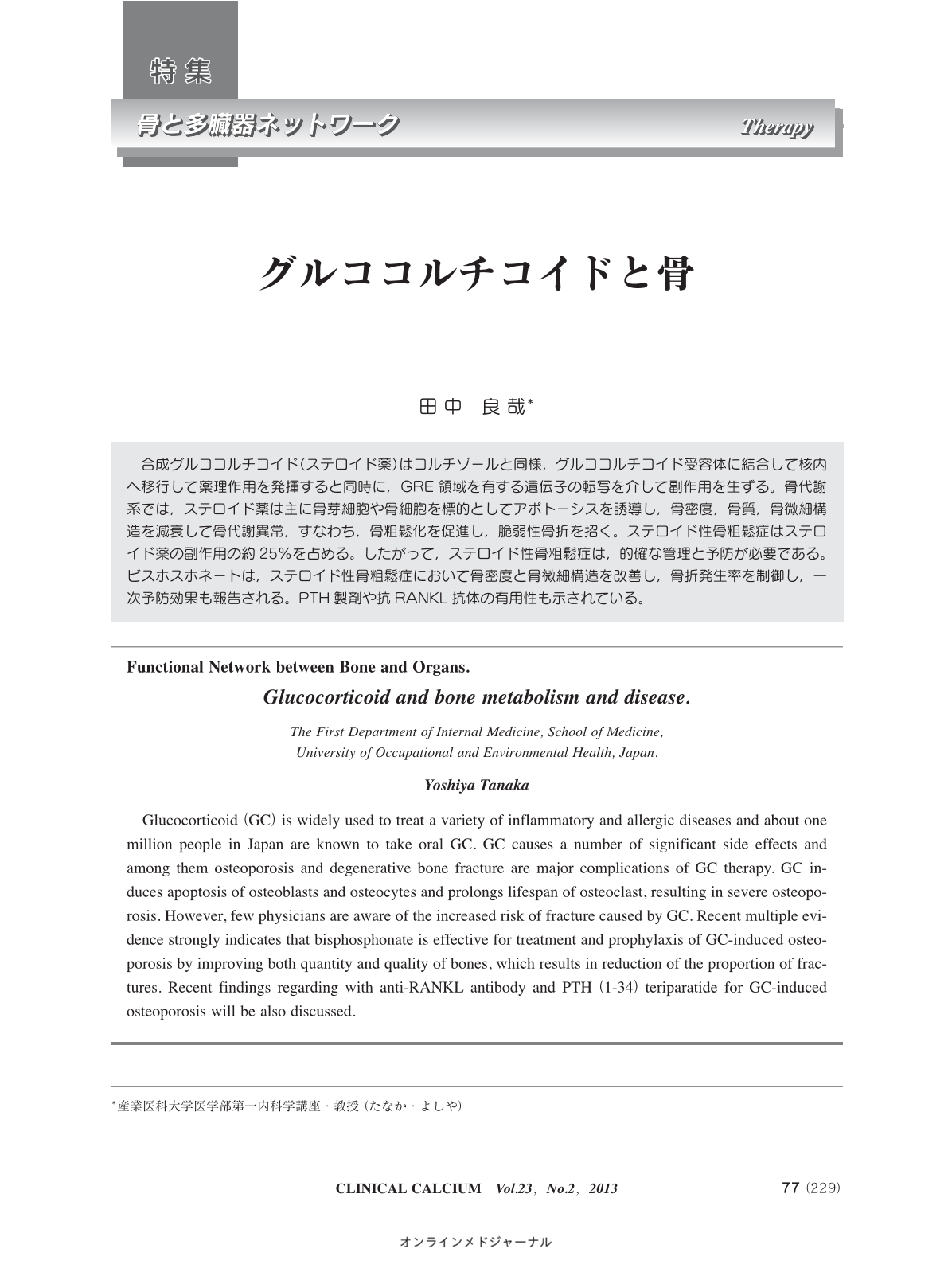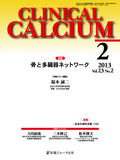Japanese
English
- 有料閲覧
- Abstract 文献概要
- 1ページ目 Look Inside
- 参考文献 Reference
合成グルココルチコイド(ステロイド薬)はコルチゾールと同様,グルココルチコイド受容体に結合して核内へ移行して薬理作用を発揮すると同時に,GRE領域を有する遺伝子の転写を介して副作用を生ずる。骨代謝系では,ステロイド薬は主に骨芽細胞や骨細胞を標的としてアポトーシスを誘導し,骨密度,骨質,骨微細構造を減衰して骨代謝異常,すなわち,骨粗鬆化を促進し,脆弱性骨折を招く。ステロイド性骨粗鬆症はステロイド薬の副作用の約25%を占める。したがって,ステロイド性骨粗鬆症は,的確な管理と予防が必要である。ビスホスホネートは,ステロイド性骨粗鬆症において骨密度と骨微細構造を改善し,骨折発生率を制御し,一次予防効果も報告される。PTH製剤や抗RANKL抗体の有用性も示されている。
Glucocorticoid(GC)is widely used to treat a variety of inflammatory and allergic diseases and about one million people in Japan are known to take oral GC. GC causes a number of significant side effects and among them osteoporosis and degenerative bone fracture are major complications of GC therapy. GC induces apoptosis of osteoblasts and osteocytes and prolongs lifespan of osteoclast, resulting in severe osteoporosis. However, few physicians are aware of the increased risk of fracture caused by GC. Recent multiple evidence strongly indicates that bisphosphonate is effective for treatment and prophylaxis of GC-induced osteoporosis by improving both quantity and quality of bones, which results in reduction of the proportion of fractures. Recent findings regarding with anti-RANKL antibody and PTH(1-34)teriparatide for GC-induced osteoporosis will be also discussed.



